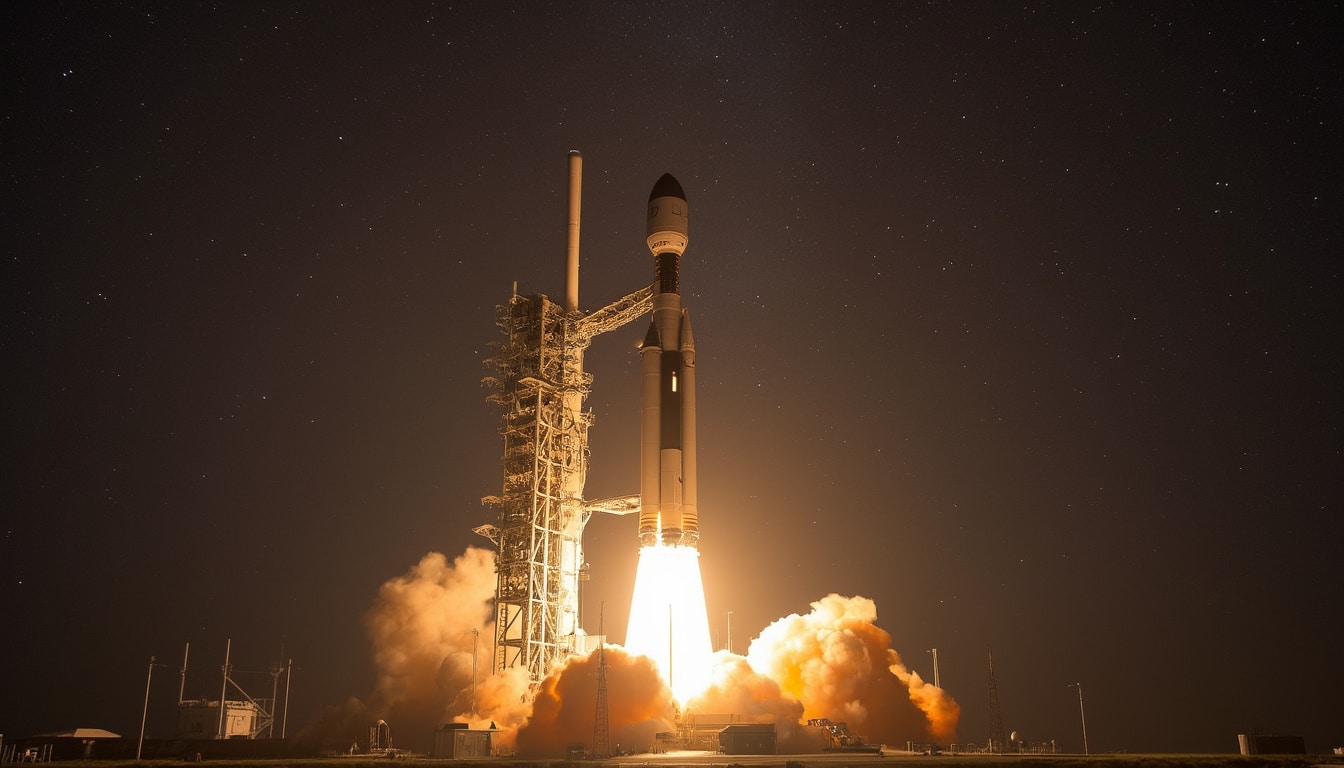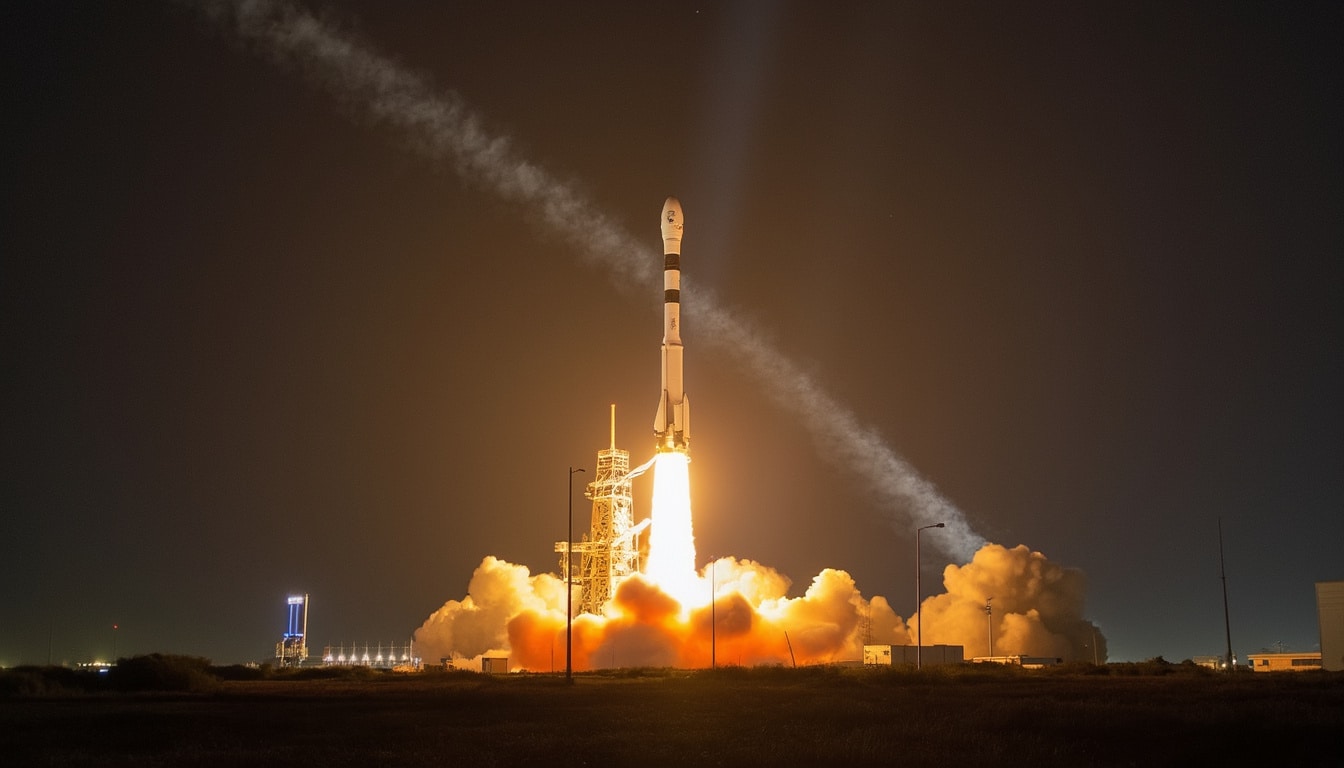The recent SpaceX launch marked a significant milestone in the advancement of satellite internet technology. On March 2, 2025, the Falcon 9 rocket took off from the Cape Canaveral Space Force Station carrying 21 new Starlink V2 satellites. This deployment is part of the ongoing Starlink mission, tailored to enhance global internet coverage, particularly in underserved regions. With its potent rocket technology and proven capabilities, SpaceX continues to solidify its role in transforming the landscape of connectivity. This successful launch not only serves the mission objectives of the SpaceX Starlink initiative but also showcases the company’s commitment to innovation and sustainability in the aerospace sector.
The Falcon 9 lifted off at precisely 9:24 PM EST, illuminating the Florida skies in a spectacular display witnessed by thousands. Each Starlink satellite represents a leap towards ubiquitous internet access, promoting technological equity across the globe. The mission underscores SpaceX’s ongoing efforts and marks the 12-20 operational phase of their expanding Starlink constellation.

SpaceX and Its Ongoing Role in Satellite Internet
As the digital age advances, the demand for reliable and fast internet access heightens. SpaceX’s Starlink project meets this demand, aiming to provide high-speed internet across the world through a constellation of satellites in low Earth orbit. The recent mission corresponds to an increased focus on enhancing the service with the new batch of satellites capable of supporting faster speeds and more robust coverage for users.
The Necessity of Satellite Internet
In a world dominated by technological dependence, the need for reliable internet connectivity is paramount. This demand is particularly acute in rural and remote regions where traditional fiber optic or broadband connections are not feasible. With the launch of the Starlink satellites, SpaceX aims to bridge this digital divide.
Starlink satellites, designed to orbit the Earth at altitudes of approximately 340 kilometers, enable users to connect using only a standard satellite dish and a router. This system is revolutionary, as it allows internet access from almost anywhere on the planet, including areas previously neglected by traditional providers. For many, this service has offered a new lifeline for education, telehealth services, and remote work opportunities.
The Technology Behind Starlink
Understanding the technology that powers Starlink is crucial to appreciating its impact. Each Starlink satellite is equipped with advanced phased-array antennas and multiple high-throughput communication channels. This technology allows them to transmit data at incredibly high speeds, ensuring a reliable connection even during peak usage times.
SpaceX’s integration of machine learning algorithms enhances the network’s efficiency, automatically adjusting to varying weather and satellite conditions. This ensures users experience minimal interruptions and higher speeds, a significant advantage over traditional satellite internet providers that often struggle with latency and connection drops.
The Falcon 9 Launch Details
The successful launch of the Falcon 9 rocket represents a key component of SpaceX’s operational model. This robust rocket is known for its reusability, which drastically reduces the cost of space travel. Each launch from the Cape Canaveral Space Force Station has not only scientific significance but also economic implications, as it establishes a sustainable model for future missions.

What Happens During a Launch
There is a complex series of events that transpire during the launch of a Falcon 9 rocket. It begins with pre-launch checks that include ensuring all systems are go. As the countdown concludes, the rocket’s engines ignite, generating massive thrust that propels it into the atmosphere.
Upon reaching the appropriate altitude, the first stage detaches and descends back to Earth, where it lands on a drone ship or at the launch site, allowing it to be reused for future missions. The second stage then ignites, sending the payload— in this case, the new Starlink satellites—into their designated orbits.
Impact of Successful Launches on SpaceX News
Every successful launch contributes to the growing narrative surrounding SpaceX’s dominance in the aerospace sector. Its innovative practices and groundbreaking achievements have positioned the company as a leader in commercial space exploration. With each mission, there is a renewed sense of optimism in the broader space community.
The SpaceX 12-20 mission underlines the company’s continued commitment to enhancing connectivity across the globe and advancing space technology. Each launch reinforces its reputation for reliability and operational excellence, making SpaceX one of the predominant players in modern aerospace.
Upcoming Launches and Future Missions
As SpaceX progresses through its scheduled launches, further developments in satellite internet technology are anticipated. Plans for the upcoming months include additional Starlink launches, designed to expand coverage and improve service quality further.
Strategic Importance of Florida Launches
The Cape Canaveral Space Force Station is crucial for SpaceX due to its geographic location and extensive infrastructure. The facility allows for efficient launches into various orbits, making it a prime site for many missions. The historical significance of Cape Canaveral, coupled with its advanced facilities, provides SpaceX with a strategic advantage in meeting its launch schedules.
Predictions for Satellite Internet Expansion
Globally, the demand for satellite-based internet will only increase. With more industries relying on fast, dependable internet, projects like Starlink are essential in fulfilling this need. Experts anticipate a significant growth surge in the next few years as more satellites are deployed and technology improves, making satellite internet a viable option for even more users.
Revenue projections for SpaceX indicate massive growth fueled by the demand for satellite internet services. The potential long-term partnerships with industries such as telecommunications also suggest an upward trajectory for investments in future missions.
Community Response and Future Connectivity
The response from communities that now benefit from the Starlink service has been overwhelmingly positive. Many users have reported significant improvements in their internet access speed and reliability. For rural areas, the introduction of satellite internet is transformative, providing opportunities that were previously inaccessible.
Challenges Ahead for SpaceX and Starlink
Despite the successes, SpaceX faces challenges as it continues to expand its OneWeb satellite constellation. Regulatory hurdles, ensuring effective communication with users, and managing the environmental impacts of launching and operating numerous satellites remain areas that the company must navigate carefully.
Looking Forward to a Satellite-Powered Future
As SpaceX continues on its journey, the horizon looks bright for satellite-powered connectivity. The Starlink missions, particularly the recently launched 12-20 batch, represent far more than just technological advancements. They embody the potential for a newly connected world where information flows freely and equitably.
Innovation in rocket technology, from the Falcon 9 to future models, proposes fascinating insights into how we will interact with the universe. The adventures of SpaceX and its mission objectives continue to inspire awe and wonder as we collectively look towards the future.
| Launch Date | Mission Name | Number of Satellites | Launch Location |
|---|---|---|---|
| March 2, 2025 | Starlink 12-20 | 21 | Cape Canaveral Space Force Station |
| February 22, 2025 | Crew-6 Mission | 4 | KSC Launch Complex 39A |
| December 23, 2024 | Christmas Starlink Deployment | 49 | Cape Canaveral |




Leave a Reply